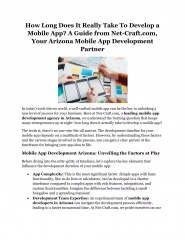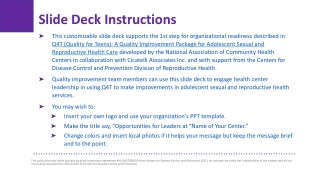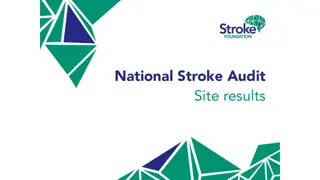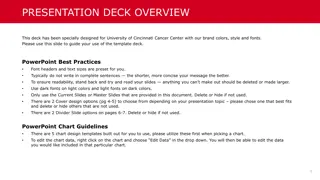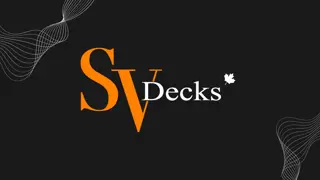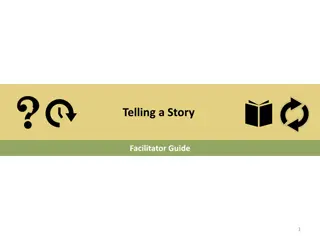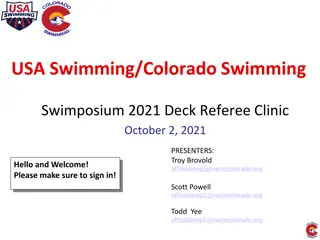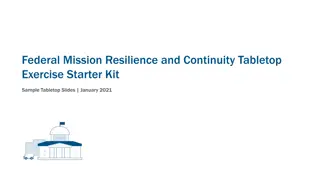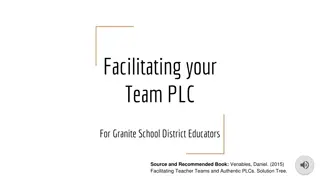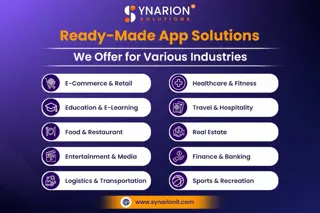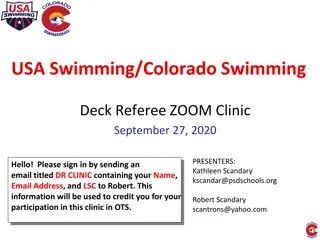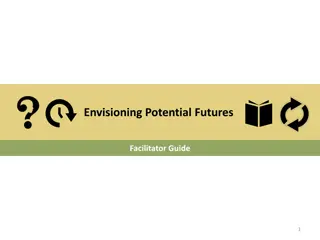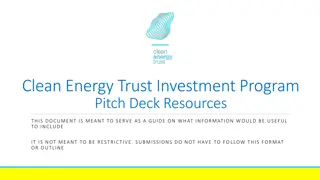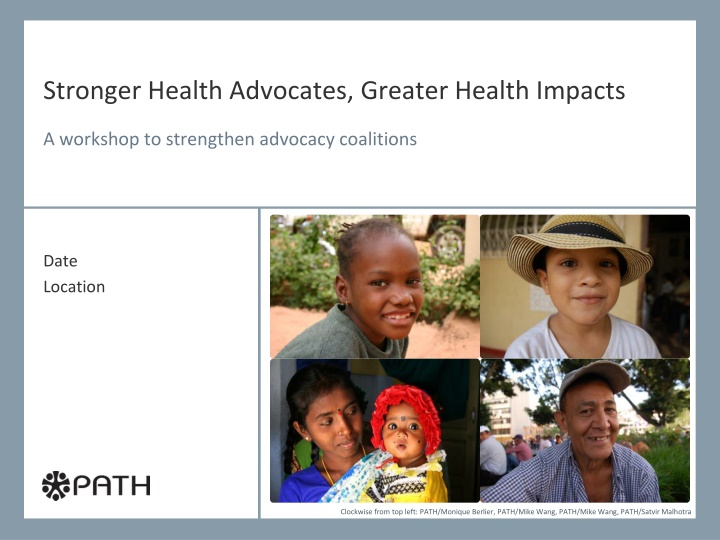
Strengthening Health Advocacy Coalitions Workshop
Join us for a workshop focused on empowering health advocates to create greater impacts through collaborative efforts. Learn how to craft a mission statement, set advocacy goals, and develop effective operational tools. Explore the benefits of consensus voting and coalition charters in fostering shared ownership and commitment.
Download Presentation

Please find below an Image/Link to download the presentation.
The content on the website is provided AS IS for your information and personal use only. It may not be sold, licensed, or shared on other websites without obtaining consent from the author. If you encounter any issues during the download, it is possible that the publisher has removed the file from their server.
You are allowed to download the files provided on this website for personal or commercial use, subject to the condition that they are used lawfully. All files are the property of their respective owners.
The content on the website is provided AS IS for your information and personal use only. It may not be sold, licensed, or shared on other websites without obtaining consent from the author.
E N D
Presentation Transcript
Stronger Health Advocates, Greater Health Impacts A workshop to strengthen advocacy coalitions Date Location Clockwise from top left: PATH/Monique Berlier, PATH/Mike Wang, PATH/Mike Wang, PATH/Satvir Malhotra
Objectives Craft an inspirational mission statement. Identify the coalition s advocacy goals. Determine membership criteria and a structure for leadership and coordination. Develop operational tools and processes to encourage productivity and efficiency. Create a preliminary coalition charter, advocacy work plan, and fundraising strategy. Page 2
New office mate Do you like to chat with colleagues during the day or keep quietly to yourself? When solving a problem, do you like to first think independently about a solution? Or do you prefer to brainstorm solutions with a group? Do you prioritize being fast and efficient in getting your work done, or are you more slow and deliberate? What is your preferred method of communication email, phone calls, or in-person meetings? Why? Page 3
Consensus Voting Consensus Must choose one option from several. Synthesizes multiple options into one hybrid option everyone can agree on. Everyone wins because each member s input is valued as part of the solution. Takes longer, but generates commitment, shared ownership. Someone wins and someone loses. Quick, but can result in bad feelings, resistance. Page 4
Steps of consensus 1. Clarify the decision to be made. 2. Develop proposals/options. 3. Evaluate the ideas. 4. Summarize common ground and points of disagreement. 5. Synthesize. 6. Finalize the decision. Page 5
Three levels of consensus I fully support this decision and believe it reflects the wisdom of the group. Thumb UP I can accept this decision even though I have some reservations. Thumb SIDEWAYS I m not comfortable with this decision and need to discuss it further. Thumb DOWN Page 6
Coalition charter Details how a coalition is organized and how it functions. Also known as bylaws, a constitution, or terms of reference. If a coalition chooses to register as a legal entity, it must usually submit a charter to the registering authority. Page 7
Common elements of a charter Name of the coalition Committees and work groups Mission statement Meeting guidelines Advocacy goals Decision making Membership Amending charter Legal status Dissolution Leadership structure Coordination structure Page 8
Advocacy coalitions Is a group whose members commit to a shared purpose and processes to conduct advocacy, while each member organization maintains its own autonomy. Page 9
Advocacy coalition Can bring together different types of organizations and individuals from multiple sectors. Can be permanent or temporary, single issue or multi-issue, geographically defined, or limited to certain constituencies the scope depends on the reasons for forming. Balances unified coalition interests with member autonomy. Is action-oriented and focused on creating change, rather than just sharing information and raising awareness. Page 10
Advocacy Policy advocacy is the deliberate process of informing and influencing decision-makers in support of evidence-based policy change and policy implementation, including resource mobilization. Advocacy is a process that places an issue high on the political agenda, increases financial and other resources on a sustainable basis, and holds authorities accountable for commitments. Advocacy is speaking up, drawing a community s attention to an important issue, and directing decision makers toward a solution. Advocacy is working with other people and organizations to make a difference. Page 11
Discuss the following questions Team 1 What do you have in common as individual organizations? What inspires you? Team 2 What does it look like to work as separate organizations? What is missing or lacking about working separately? Team 3 What would it look like if your coalition is successful? What will be the ultimate change that comes from your coalition s advocacy efforts? Page 12
Mission statement Explains why you exist as a coalition. Shows what you are going to do to accomplish your vision. Reflects your coalition s special niche. Reveals values, passions, principles that motivate your work. General, does not detail your work or your advocacy agenda. Concise, inspirational, often catchy. Frequently used in websites, publications, press releases, brochures, proposals, etc. Page 13
Elements of a mission statement Cause (who we serve and why) Actions (what we do) Impact (changes for the better) Page 14
Because our coalition advocated for female condom distribution, women in District X now have greater access to their own tools to stay protected from unplanned pregnancy and HIV. More women come to the clinics now and they feel more confident to request services for themselves and their daughters. Page 15
Patterns and themes: examples Page 16
Mission statement examples We help women stay healthy by advocating with policymakers and ensuring access to essential services. Helping empower women by conducting advocacy for gender-sensitive health services. By influencing policymakers, we promote health and empowerment for women and their families. Page 17
DAY TWO Page 18
Case studies In your case example, identify the coalition s: Mission statement Advocacy goals Membership criteria Leadership and coordination structures Page 119
Advocacy issues Advocacy issue a health topic or a problem that your coalition will advocate on. Examples Maternal mortality HIV prevention Childhood immunization Family planning Comprehensive sexuality education Essential newborn care Malaria treatment Page 20
Categories of advocacy issues Priority: key to the coalition s mission or advocacy agenda. Potential: not essential to the coalition s mission or its advocacy agenda, but could play a role or become a priority later on. Doesn t mean they are not important or that you won t focus on them. Just not right now. Problematic: issues the coalition will decidedly NOT work on. They may hold some risk for the coalition or cause difficulty for some member organizations. Page 21
Advocacy goals Guide your advocacy strategy. Specify the concrete change your coalition wants to accomplish. Should be specific and clear so that you know when change happens. Focus on actions taken by decision-makers. Should be achievable in 3 to 5 years. Page 22
Components of an advocacy goal WHO: the decision-making institution with the power to make the change. e.g., ministry of health, Parliament, council of chiefs WHAT: the change that your coalition wants to see. e.g., standardized treatment guidelines, adolescent access to family planning HOW: the specific action that a decision-making institution will take to make the desired change a reality. e.g., passing a law, signing a decree Page 23
Examples of advocacy goals The Ministry of Education will include family planning education in the mandatory national secondary curriculum. The Ministry of Health will remove the restrictions in the Health Insurance Reform Policy that prevent non- citizens from obtaining national health insurance. The Ministry of Health will deliver on commitments to increase resources for maternal, newborn, and child health. Page 24
Components of an advocacy goal WHO: the decision-making institution with the power to make the change. e.g., Ministry of Health, Parliament WHAT: the change that your coalition wants to see. e.g., standardized treatment guidelines, adolescent access to family planning HOW: the specific action that a decision-making institution will take to make the desired change a reality. e.g., passing a law, signing a decree Page 25
DAY THREE Page 26
Disagreement, friction, and conflict Disagreement: difference of opinion based on values, needs, interests, or intentions. Focus is on the issue. A B Page 27
Disagreement, friction, and conflict Friction: disagreement starts to become frustrating, annoying, and personal ( irritated disagreement or personality clash). Focus moves from the issue to the other person s behavior or style. Emotions, personalities A B Page 28
Disagreement, friction, and conflict Conflict: a serious, protracted dispute where resistance builds up and communication and productivity often break down. A B CONFLICT Page 29
Disagreement, friction, and conflict Victor feels strongly that the coalition should not pursue a particular grant. Mary thinks they should. Victor thinks Mary rambles on too much at meetings, and he regularly interrupts her. Mary finds Victor to be rude and impatient. Victor ignores Mary s requests to see the last financial report so she won t have the information for her grant proposal. Mary sends an email to another coalition member to complain that Victor is always trying to control the coalition. Page 30
Most people do not listen with the intent to understand; they listen with the intent to reply. Stephen Covey Page 31
Empathetic listening Empathetic listening mean listening with the desire to truly understand another s perspective. We attempt to see the situation as the other person does, not how we assume he/she sees it. We listen to statements and watch behaviors for clues about the other person s feelings, needs, values, beliefs, motivations signs of what s really important to that person. Page 32
Membership issues Who can be a member? Levels of membership. Process of becoming a member (and dues). Benefits and expectations of all members (e.g., attendance, participation standards). Circumstances in which membership ends. Page 33
Membership eligibility: examples Membership open to: Organizations only, or both individuals and organizations. Nonprofits only, or both nonprofit and for-profit companies. Potential members must: Support the coalition s mission and advocacy goals. Have a history of action related to the coalition s mission. Work on the same issues as the coalition and share some of the same advocacy goals. Agree in writing to be actively engaged in the roles and responsibilities of membership. Page 34
Membership process Topic Ideas Open applications Invite specific organizations Recruitment Questionnaire, written application with signed agreement to charter References/letter of support, organizational letter of commitment Application: what is required? Who: membership committee, panel of rotating members How: application review, interview Review/vetting process Voting by whole coalition or just membership committee? Approval Page 35
Member expectations Most coalitions expect members to: Endorse the mission of the coalition. Accept and respect charter or bylaws documents. Organize or participate in joint activities. Maintain a certain level of attendance/participation in coalition meetings. Share information. Join and endorse letters and statements. Some coalitions require members to: Sign commitments on conduct if they are registering for meetings under the coalition umbrella or receiving funding. Pay annual subscriptions or dues. Page 36
Decision-making DECISION CHECKLIST Who can be a member? Levels of membership. Process to become a member, member dues. Benefits and expectations of all members (attendance, participation, etc.) Circumstances in which membership can end. Page 37
Levels of coalition structure LOOSE MODERATE HIGH Simple network that s open to any interested organization. Members meet occasionally and form working groups for special projects as needed. Coalition has a mission statement, basic charter, some advocacy objectives, a few committees, and maybe sporadic funds. One agency coordinates meetings and communication but has no dominant role. Coalition has detailed bylaws, membership criteria, an official membership application process, and elected officers. It may also have paid staff, a secretariat, membership dues, independent funding, and registration as a separate legal entity. Page 38
Legal registration or not? Some local or national laws actually require some sort of legal registration, especially if the coalition will receive funding. Key questions for your coalition: Is there a strategic reason to register? If registration is required, how will that happen? What research do we need to do? Will registration guidelines dictate a particular type of governance? Page 39
Coalition structures Leadership: a person or group that helps lead the coalition. Coordination: day-to-day coalition administration and communication. Distribution of work: a way of dividing tasks or focal areas among members. Page 40
Officers Example: president, vice president, secretary, financial officer. Voluntary or elected by a committee or by full membership. Need to specify: Duties Eligibility Process for entering office Length of office Conditions/procedures for removal Others Page 41
Steering committee (executive committee) Subgroup that manages the affairs and furthers the activity of the coalition, based on input from coalition members. Often starts as the group that developed the coalition. If a coalition has specific leadership positions (i.e., officers), these individuals usually sit on the steering committee and often lead the steering committee itself. Offer guidance and resolve tensions. Should represent the breadth of a coalition s members and stakeholders. Often with an odd number to help break ties when voting. Page 42
Steering committee membership Steering committees can include: Officers only. Officers plus a set number of other coalition representatives. Any member of the coalition. Percentage of seats set aside for certain groups (e.g., 50 percent women or 75 percent civil society organizations). Mechanisms to select a steering group (outlined in charter): Elections from the full membership. Self-selecting, volunteer basis. Nominations. Rotating spots across all members. Page 43
Options for coordination Rotated coordination among members Assigned task of a designated officer or co-chair Lead agency (secretariat) Paid coordinator Page 44
Decision checklist DECISION CHECKLIST Leadership structures Coordination Page 45
Ways to organize work groups Type of member organization (e.g., INGOs, donors, civil society members). Tasks that need to be completed: Ongoing tasks, such as grassroots engagement, budget advocacy, media and communication, resource development. Specialized as needed tasks that emerge from an unanticipated event or opportunity. When the task is completed, the group is disbanded (e.g., developing a policy brief for a parliamentary event). Issue area or advocacy goal (e.g., maternal health, newborn health). Region or country where members are from. Page 46
Organization chart An organization chart is a diagram of a coalition s structure that shows how different leaders and work groups within the coalition relate to each other. Page 47
Decision checklist DECISION CHECKLIST Distribution of work Page 48
DAY FOUR Page 49
Decision checklist: meeting guidelines 1. Who needs to meet? (full membership, leadership, etc.) 2. What are the meeting guidelines? How often/when will meeting be held? Who will call the meeting and notify members? Who establishes the agenda? Is a quorum needed for the meeting to move forward? What number or percentage of attendees constitutes a quorum? Who will facilitate? Who will record meeting notes and how will they be distributed? How will members communicate between meetings? Page 50

